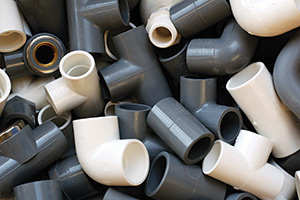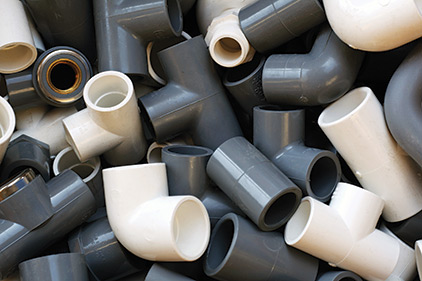
|
| PVC can work well in HVAC applications, but be sure to consider the benefits and drawbacks for your specific needs. |
Polyvinyl chloride (PVC) is hailed as a wonder material, and, in many ways, it is. However, the possibilities are not endless. PVC has its limits, especially in HVAC applications. PVC sometimes makes sense for heating and cooling applications — other times, it doesn’t. Before deciding which material works best for your building or installation project, consider how you want your system to perform, what expenses you are willing to pay on the front end, and the factors that could potentially limit upgrades down the line.
Below are some pros and cons of PVC that can help you decide whether it’s the proper material for your heating and cooling project.
PVC Pros
Usability: PVC is durable and usable for a variety of purposes. In many cases, its sturdiness makes installation much easier and it can be used in a wide range of environments, whether in ceilings, walls, or floors. However, the difference in weight can be an issue (more on that in the cons).
Resistance to Corrosion: Corrosion can be an issue in any setting, but more so in a commercial building where fumes, gases, or exhaust can put a HVAC system at risk of becoming damaged over time. PVC is considered a good option for mitigating the risk and is often used to comply with mandated safety regulations. In homes, PVC ductwork can allow a heating and cooling system to run beneath the house without being corroded by moisture or even radon.
Versatility: PVC comes in handy if a builder prefers to design a home with heating and cooling grilles in the floor, rather than in the ceiling. It is especially useful if the house will not have a crawlspace that would make space for metal ductwork. For a house built on a concrete slab, PVC ductwork is a preferable option for being placed directly beneath a floor. And, as mentioned above, PVC material protects against moisture-related corrosion that can occur at the floor level.
Insulation: One of the key reasons PVC is used for heating and cooling is that the material is much better at insulating than metals, which are conductors that do not hold heat well. As hot and cold air travels through thin mill steel, it is dispersed, resulting in a heating and cooling system that is not as efficient as PVC. While metal ductwork is generally fine for smaller buildings, PVC is often preferred in larger buildings where heat and cool air need to travel farther through the ducts.
PVC Cons
Heat Constraints: While PVC can be used to carry cold water and air all day long, there are maximum temperature ratings for the material. The universal maximum temperature for PVC is 140?F. This could limit some heating applications if temperatures are expected to be near or above this range.
Cost: In general, PVC is more expensive to manufacture. The cost difference is not huge, so, for smaller buildings, the higher price can be negligible. For larger buildings, though, costs can add up. While the front-end costs for PVC can be higher, PVC potentially can save money over time once maintenance and energy efficiency are factored in.
Weight: Metal ductwork is very thin and lightweight. By comparison, PVC can weigh twice as much when made into similar structures. From a building and design perspective, this can be limiting. It also can complicate installation.
Cross Application: If you chose to use PVC in ductwork, you must be mindful that you will not be able to substitute metal parts later. You couldn’t simply upgrade by substitution. The two product types are not interchangeable, as they are not available in the same shapes and sizes. This can complicate future maintenance and upgrades. Additionally, custom metal duct shapes are easier to fabricate in the field than PVC shapes, which often must be special ordered from a manufacturer.
HVAC needs are different for every structure, and you likely have your own priorities when installing — be it energy efficiency, convenience, or cost. PVC can save energy and open different design options, but it can be more expensive initially and can limit your ability to adapt later. Overall, it is a feasible (and often preferred) material for heating and cooling systems, but not always. If you consider each of the pros and cons listed above, you will be better equipped to determine the best ductwork material for your specific project.
Publication date: 8/18/2014
Want more HVAC industry news and information? Join The NEWS on Facebook, Twitter, and LinkedIn today!



Report Abusive Comment